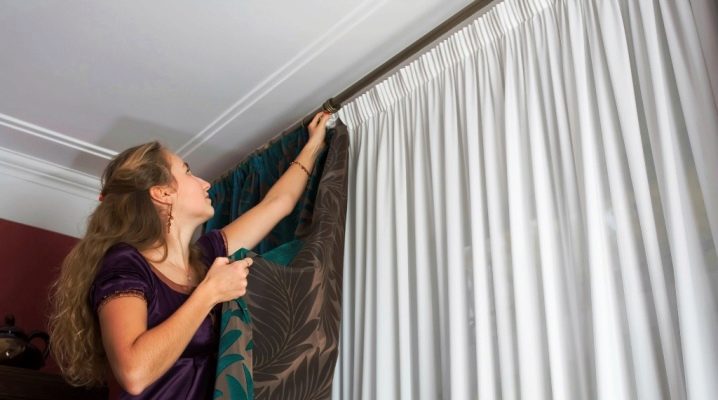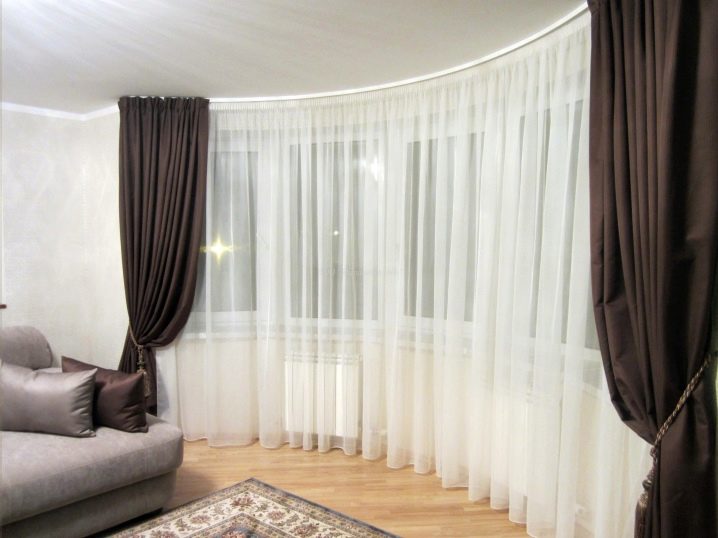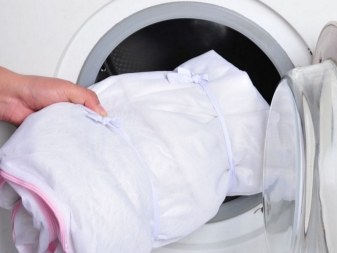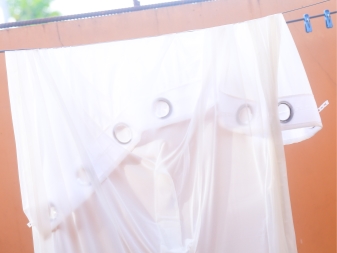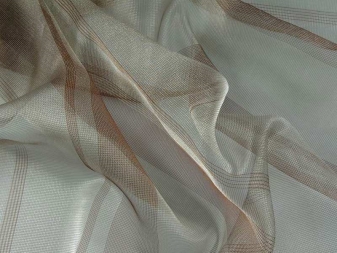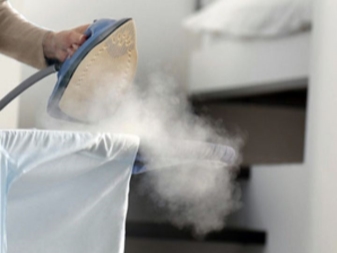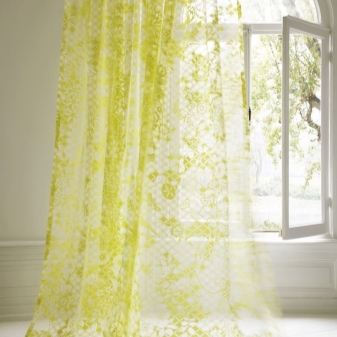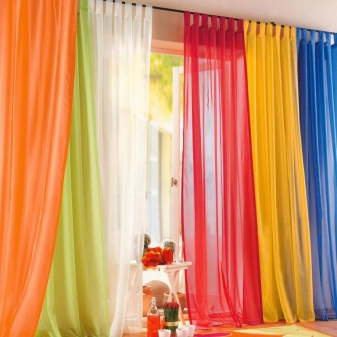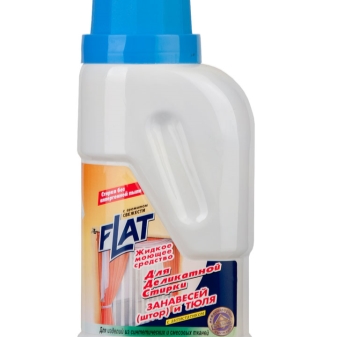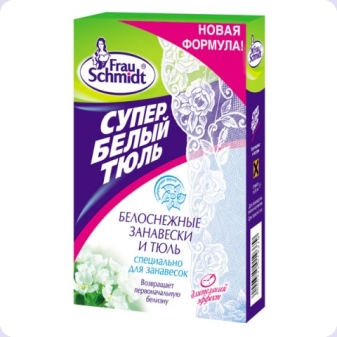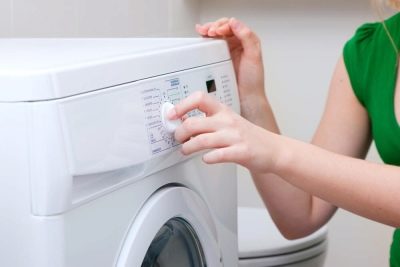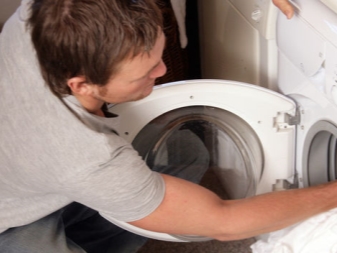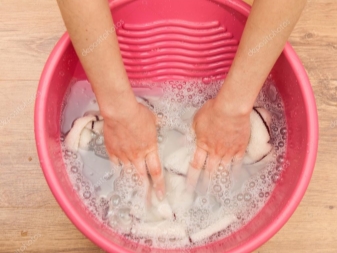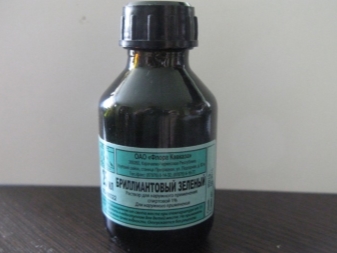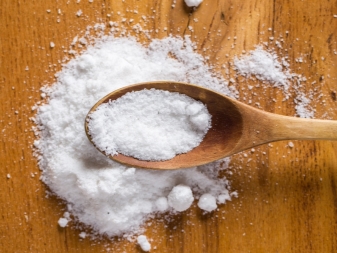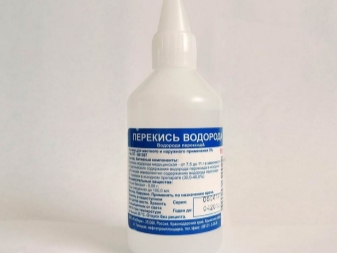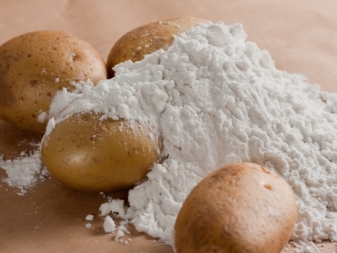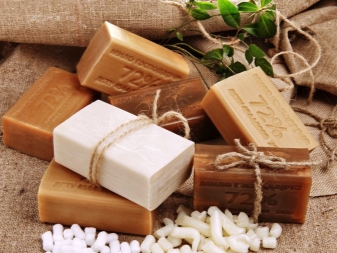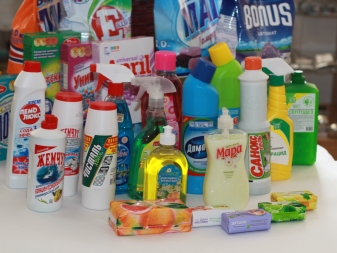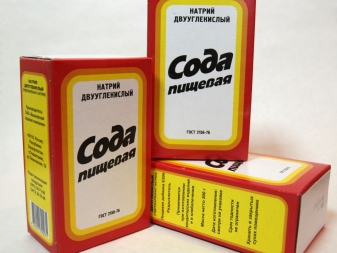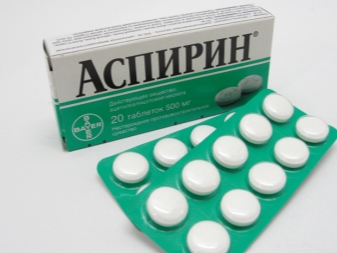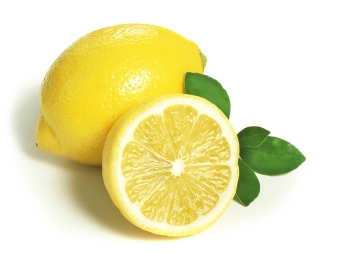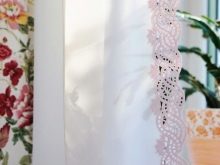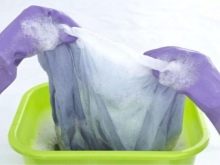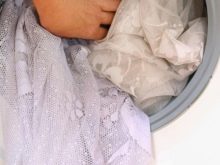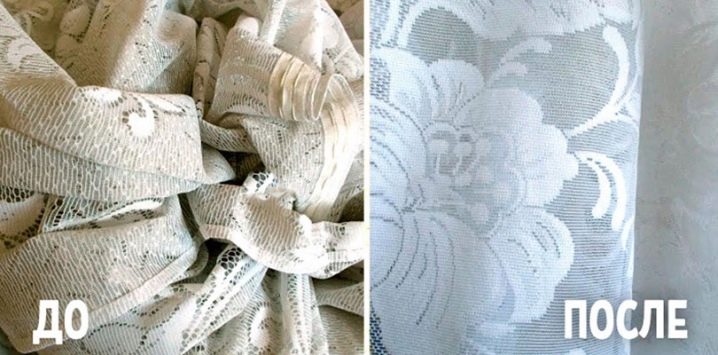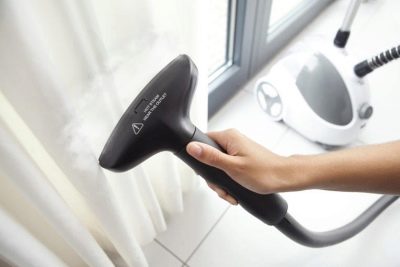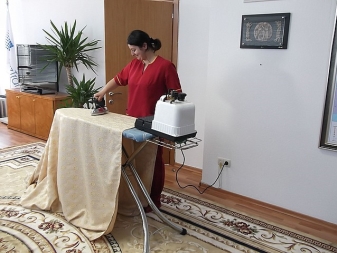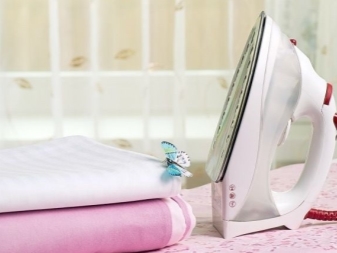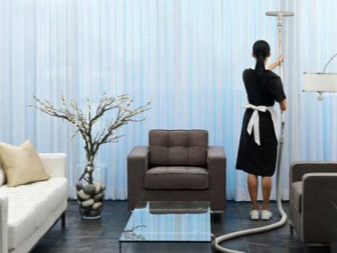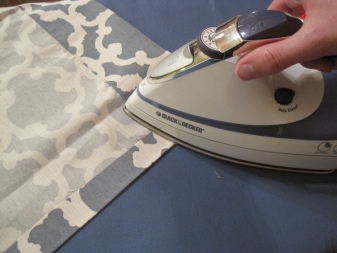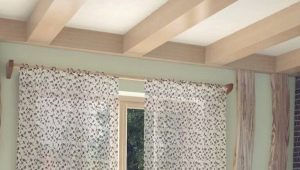How to wash and iron tulle?
Cozy elegant home - the dream of every hostess. Every woman knows that a refreshingly-airy appearance of the windows can be given with the help of tulle curtains. However, the life span of tulle in its pristine whiteness is quite short.
Especially quickly tulle loses its attractiveness in the kitchen, where it is quickly polluted, absorbing the soot and soot of the kitchen. For this reason, the housewives have at some point to solve the problem of the return of tulle blinding whiteness.
How often can I clean?
Tulle curtains are a familiar attribute of any home, and it is they who largely determine the degree of its grooming. Probably, in this case, some stereotype in the reasoning works: if the tulle is soiled and the hostess doesn’t pay attention to it, it means that she is just sloppy.
However, in reality, everything is not as simple as it might seem at first glance. Non-ordained women in the household are unlikely to know how difficult it is to keep curtains in good condition. ATHowever, it should be noted that this problem can be solved in a timely manner without high financial costs, if the hostess knows effective ways to whiten tulle with the help of folk remedies.
Many women try to maintain the whiteness of the curtains by increasing the frequency of their washing. However, this decision leads to a paradoxical effect: the material not only does not restore its original whiteness, but, on the contrary, with each wash, it becomes more and more dull yellow-grayish tint.
To achieve the desired effect, you can use the tools relating to household chemical bleach or popular recipes, time-tested.
Training
The modern chemical industry is developing rapidly, focusing on consumer demands. Therefore, today there are many different products on sale that have both a whitening and a stain-removing effect.
There are certain rules for using chemical bleaches. So, bleach can be put in the washing machine with powder. If this method for some reason does not suit you, you can first stretch the tulle,and then soak it for about half an hour in a bleaching agent. Soak the fabric to separate from other linen.
General recommendations
Tulle is difficult to wash by hand. It is usually washed and bleached in a washing machine-machine. Before washing, it is necessary to shake out the dust from the curtains, this will ultimately improve the quality of washing and will reduce the time of this procedure. Before you put the curtains in the machine, they should be carefully folded, otherwise you will not be able to avoid the appearance of creases.
You should not wash the curtains with hooks, you should always remember about the safety of the machine and the product itself. As for the eyelets, they are not removed, but the product itself is placed in a special bag in order to protect both the drum and the rings from possible damage.
For washing and bleaching, you can use many commercially available bleaching agents.
They are effective both for bleaching and for starching of mesh materials, moreover they are distinguished by insignificant foaming. When washing the tulle in the machine, you should carefully use the powder: its usual doses should be reduced so as not to provoke excessive foaming.
However, today many housewives prefer to use oxygen bleaches: they do not harm the structure of the fabric fiber, are effective in the low-temperature mode of washing and are universal.
Currently, widespread shampoo-gel, designed to care for delicate materials: its gentle composition is designed for low temperature and easy rinsing. The use of aggressive bleach containing chlorine for tulle is strictly prohibited.
How to choose the right mode for different types of fabrics?
Since, at present, a variety of artificial materials are used for the production of tulle, along with many well-known viscose, silk and cotton, it is necessary to carefully read the information on the label of the curtains and follow the manufacturer's recommendations. To select the correct mode of machine wash, you need to proceed from the material properties specified by the manufacturer.
For example, when washing cotton tulle, if it is very dirty, it takes a long soak. At the same time, depending on the composition of the material, different temperature conditions are chosen: pure cotton tulle is washed at a temperature of 60?, And the onewhich also has a certain set of synthetic additives - at 40%.
Synthetic fabrics should be treated differently. So, nylon tulle is considered to be an extremely delicate material: with intensive washing, numerous puffs quickly form on it. The washing program should be treated very carefully. It should cover several modes: delicate washing, the minimum allowable number of revolutions, the possibility of additional rinsing and carrying out the drain without the use of a wringer. Machine drying is undesirable, because in the process of its implementation nylon severely crushed.
Silk organza requires particular care. Features of washing such delicate tulle can be reduced to the following points:
- contraindicated to apply conventional washing agents require special powders labeled "Silk";
- prohibited add bleach and oxygen-containing compounds during washing;
- white organza should be washed by adding borax, not laundry detergent;
- recommended organza wash in the case to avoid friction of the material on the drum;
- brightness of organza colors with the help of adding 100 ml of vinegar in the compartment (for the air conditioner) to the machine.
Since at high temperatures the silk fiber is deformed, it is necessary to wash the organza at a temperature not higher than 30 ?. To preserve the quality of the material, it is necessary to choose special washing programs. Spin is usually not recommended or the minimum possible is selected. For drying organza, room temperature is best.
Whitening products
Many women have long appreciated the benefits of using bleach. Indeed, their obvious advantage is that they do not cause allergic reactions. They are in almost every home, but mainly used for other needs. Also important is the affordable price of household bleach and ease of use.
The list of the most effective household bleaches consists of:
- salts;
- Zelenka;
- blueprints;
- ammonia and hydrogen peroxide;
- starch;
- household soap.
Tulle is soaked in a solution of washing powder with table salt (preferably at night). The solution for soaking is prepared as follows: take half a glass of powder (which you usually use) on a bucket of water and add salt (without iodine) - no more than 3 tbsp is enough. spoons.If time is short, soaking can be limited to 3 hours. At the completion of the soaking stage, the fabric needs to be washed and then rinsed several times.
From the yellowness of the curtain bleached with green. For this purpose, pharmaceutical greens (10 drops) are diluted with 200 g of water, to which salt can be added (2 full tablespoons). When a precipitate is found in the solution, it must be thoroughly mixed so that later in the bleaching process no greenish stains appear.
Thus prepared solution with brilliant green should be poured into the water for rinsing and rinse the curtains. For a better leaching of the solution, you can hold the fabric in water for several minutes, without forgetting to turn it over. It is not necessary to squeeze the tulle: it is hung up without preliminary squeezing to let the water flow gradually and evenly.
For whitening tulle a good result can be obtained using blue. Dissolving 1 cap of blue in 10 liters of water you get the desired concentration. Tulle rinses first with blue, then in ordinary water.
Hydrogen peroxide with ammonia is well bleached gentle curtains of nylon and organza. The express method is popular: 30-40 ml of hydrogen peroxide and 15-20 ml of ammonia are injected into warm water (over 50?). It is necessary to turn the soaked cloth from time to time, then rinse thoroughly, straighten it and hang out to dry it without pressing.
Another popular homemade bleaching agent is starch.
A little starch (200-300 g) is added to water (10 liters) for rinsing, in which the curtains must lie for at least 5 hours. After this time, they are dried, not squeezing. Compared to other bleaches, starch has an important advantage: it gives the curtains relief.
Tulle can be whitened using household soap. The soap solution is brought to a boil, after cooling cool water is added to it. In this solution, the fabric should be kept for 7-8 hours, then washed and rinsed again.
It is difficult enough to restore the curtains, if there are various stains on them, for example, from soot or from soot, from fat. Grease stains can be removed with a solution of detergent applied to the sponge. After washing the cleaning solution, the wet portion of the fabric is dried with a hairdryer.If signs of tissue deformation appear, this place should be steamed with an iron.
To remove yellowish and gray spots, you can use salt or soda ash: A tablespoon of any of these agents is added to the water in which the cloth is soaked. If the tulle has old stains, this solution should be renewed several times. After washing, the curtains should be rinsed in the same solution. In the final stage, rinsing is carried out in cold water.
At home, many women have adapted to remove grayish-yellow spots and stains with aspirin from tulle.
Prepare the desired solution with aspirin is not difficult: it is diluted in heated water (4 tablets of aspirin are required for 5 liters of water). The fabric is soaked for 3 hours, and then washed and dried in accordance with standard rules.
To remove stains from rust, it is recommended to try to apply this or that organic acid. Help to remove rust can acids such as citric, oxalic, tartaric.
The concentration of the acidic solution depends on the degree of contamination of the tissue. In a heated acid solution, a piece of tissue is lowered for several minutes and thenit is washed in water to which baking soda or ammonia is added beforehand.
How to update the old curtain?
It is particularly difficult to bleach old gray and yellowed tulle. It is unlikely that he will be able to bring it to the original perfectly white color, but it is quite feasible for every woman to return him an attractive look.
From the dullness and unpleasant yellowness of the curtain can be saved with the following step-by-step procedure, the essence of which is as follows:
- washing in the machine;
- digestion by boiling in a concentrated soap solution;
- whitening by soaking in solution, the bleaching components of which are ammonia and hydrogen peroxide;
- rinsing using saline solution;
- rinsing with the addition of starch.
Whitening and neutralization of yellowness is also often carried out with the help of blue.
Sinking on the fibers of the material, it returns white color to it, since it works as an optical bleach.
In this case, you can act in two ways: pour the solution prepared from blue into the compartment of the washing machine and rinse the tulle in it, or wash it immediately using a powder containing blue particles.
Ironing methods of various materials
For ironing curtains using methods that meet the specificity of a particular fabric.
Ironing the curtains is quite comfortable on the ironing board, but this task can be handled more quickly if you have a sufficiently large and long table.
- Organza
For ironing organza curtains, follow these guidelines:
- quickly smoothing organza will not succeed, because it is very difficult to ironing material;
- is necessary use an iron with an absolutely clean sole without mechanical damage;
- need to use tissue paper and ironing only completely dry organza;
- follows completely eliminate the function of "pairs": it leads to wave formation on the fabric, which is not eliminated.
- Cotton or linen
For cotton and linen tulle the following rules should be used:
- after washing such fabric is not pressed;
- prostrate wet tulle is hung on the baguette, so it will be gradually smoothed out without an iron;
- iron a slightly damp fabric is well-ironed at a temperature of 100 ?;
- curtain need to iron from the inside out through cheesecloth.
- Synthetic fiber
Artificial tulle does not naturally straighten, it is ironed as follows:
- at a temperature 110-120 degrees in a bit wet state;
- from the inside with the mandatory use of wet gauze.
It is better to first try to iron a small piece of fabric to determine the optimum temperature.
Often the hostess resort to ironing curtains, hung after washing on the eaves. This procedure is easy to perform using a steam generator or steamer. So you can save both time and energy.
Useful tips
For high-quality washing of tulle, it is important to know not only the basic methods of its bleaching, but also a number of subtleties of caring for it. In summary, the most important recommendations are:
- Before washing dust should be shaken out of the curtains as carefully as possible;
- Polluted curtains on the eve of washing are soaked overnight in water with powder;
- Washing held in water having a temperature of 30-40? in order to avoid yellowness;
- Before whitening the fabric must necessarily be scrubbed;
- In the process hand washing is forbidden to rub the tulle, it can only be gently squeezed when turning;
- Industrial Bleach is recommended only for new curtains;
- After bleaching the curtains are not wrung out, but are hung out semi-moist so that the water flows naturally;
- Ironed The curtains are slightly heated iron.
If you comply with these numerous but uncomplicated requirements, the hostess will be able to preserve the whiteness of her curtains for a long time and save a lot of money.
More information about how to properly wash and iron the tulle, you will learn from the following video.
